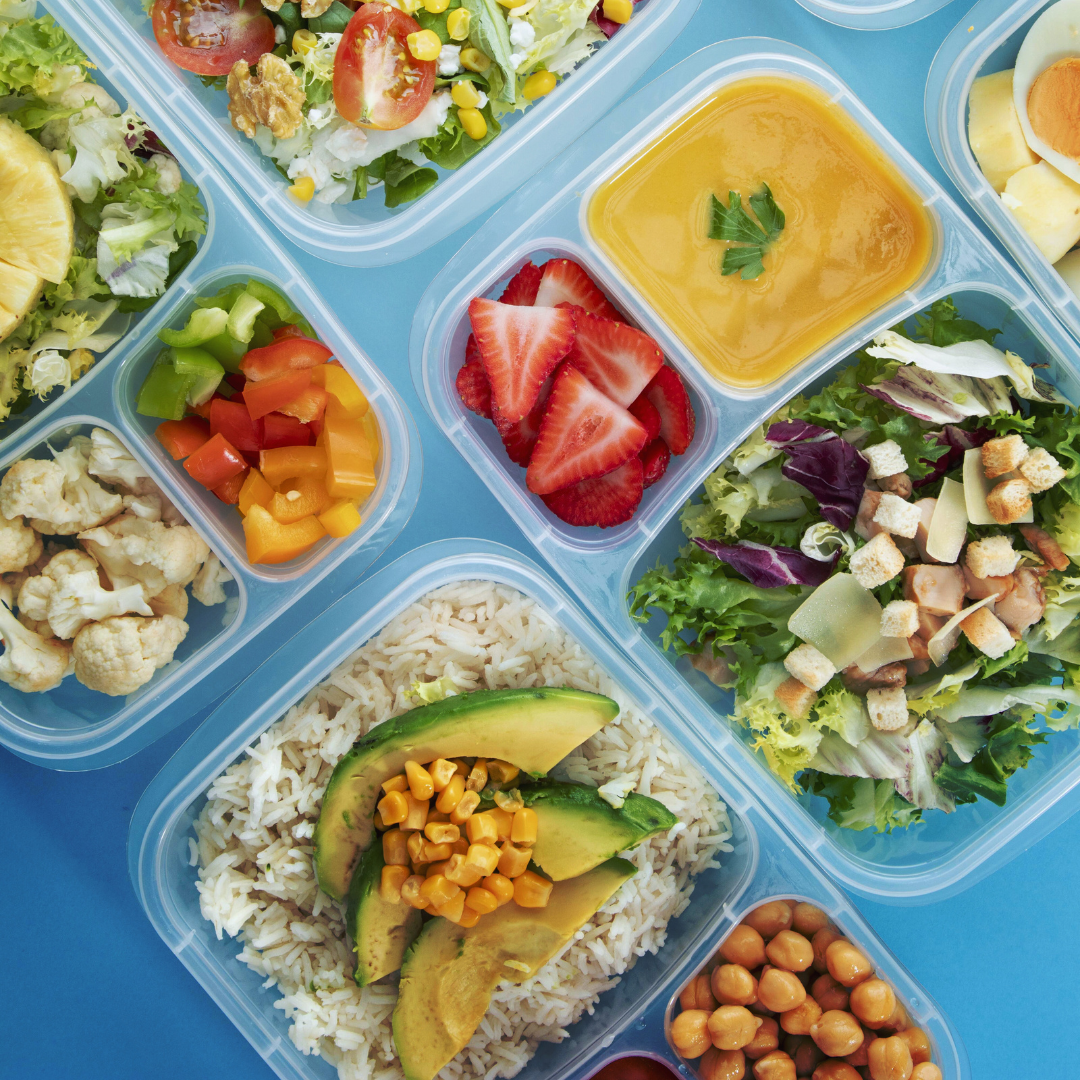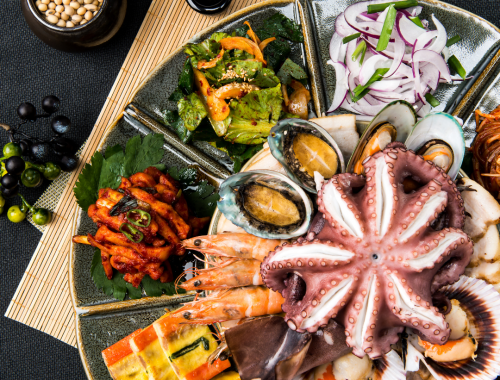
The Ultimate Guide to Meal Prepping for Busy Weeks: Strategies for Easy and Healthy Eating
Meal prepping can transform hectic weeks into smooth sailing, making weeknight dinners more manageable and healthier. By planning and preparing meals in advance, individuals can save time, reduce stress, and enjoy nutritious options throughout the week. This guide serves as a comprehensive resource for those looking to simplify their cooking routine while still enjoying delicious, home-cooked meals.
Understanding the essentials of meal prepping is key to making it effective. From choosing the right containers to selecting recipes that suit varying schedules, this guide covers all aspects to streamline the process. With practical tips and strategies, anyone can turn meal prepping into a sustainable habit that fits their lifestyle.
Whether one is a beginner or someone looking to refine their approach, this guide is designed to provide the clarity needed for success. By embracing these techniques, busy individuals will find that healthy eating becomes not just a goal but a reality.
Foundations of Meal Prepping for Busy Weeks
Meal prepping streamlines cooking by planning and preparing meals in advance. This practice can save time and reduce food waste, all while supporting healthy eating habits. Understanding the fundamental aspects of meal prepping sets the stage for success during busy weeks.
What Is Meal Prepping and Why Does It Matter?
Meal prepping involves preparing meals for the week in advance to ensure quick and nutritious options are available. It typically includes cooking larger portions and storing them in convenient containers.
This approach not only saves time during weekday dinners but also minimizes the impulse to choose unhealthy options. By planning meals ahead, individuals can control portion sizes and ingredients, enhancing overall meal quality.
Core Principles of Weekly Meal Prep
Successful meal prepping hinges on a few core principles:
- Planning: Allocate time to decide on recipes and create a shopping list. This avoids last-minute decisions that could lead to unhealthy choices.
- Batch Cooking: Prepare larger quantities of select meals, such as stews, grains, or proteins, to use throughout the week.
- Storage: Invest in high-quality, airtight containers to keep meals fresh and organized. Label containers with dates to keep track of freshness.
Implementing these principles can lead to significant time savings and less food waste.
How Meal Prepping Supports Healthy Eating
Meal prepping directly contributes to healthier eating by facilitating better choices. When meals are prepared in advance, it becomes easier to select nutritious options rather than resorting to fast food or processed snacks.
Portion control is another benefit, as pre-made meals can be balanced with the right amount of macronutrients. Reducing food waste is crucial; planning meals helps ensure that ingredients are utilized fully.
Incorporating a variety of fruits, vegetables, and whole grains during the prep can elevate nutritional intake without extra effort throughout the week.
Creating an Effective Meal Prep Plan
Establishing a meal prep plan requires organization and strategy. Thoughtful planning of meals, careful grocery shopping, and attention to nutritional balance are crucial elements.
How to Plan Your Meals Step by Step
Begin by selecting a day to plan meals for the week. He or she should choose a mix of proteins, carbohydrates, and vegetables to ensure variety.
Using a template can help visualize the week. A simple chart with each day listed alongside meals can keep things clear.
For each meal, think about preparation time. Choosing recipes that require similar ingredients can simplify the process, reducing the need for excessive shopping.
Building a Practical Grocery List
An effective grocery list starts with the meal plan. Each ingredient needed for the selected recipes should be listed.
Organizing the list by category, such as proteins, grains, and vegetables, can enhance shopping efficiency.
Including quantities prevents overbuying or missing essential items. Stick to the list to avoid impulse purchases that can lead to waste.
Choosing Balanced Meals and Macronutrients
Balanced meals should include a mix of macronutrients: proteins, carbohydrates, and fats.
He or she might consider using the plate method—filling half the plate with vegetables, one-quarter with protein, and one-quarter with whole grains.
Incorporating various sources of micronutrients is important as well. Aim for colorful vegetables and whole foods to maximize nutrient intake.
Addressing Food Waste and Leftovers
Planning ahead allows for the effective use of leftovers. He or she can turn extra portions into new meals; for example, grilled chicken from a main dish can be added to salads or wraps.
Labeling containers with dates helps track freshness, reducing the chance of food waste.
Creating a meal components list can also aid in using items creatively, such as repurposing roasted vegetables or grains in various dishes throughout the week.
Essential Tools and Techniques for Meal Prepping
Effective meal prepping requires the right tools and techniques to streamline the process. Focusing on batch cooking, essential tools, and maximizing kitchen appliances can significantly enhance efficiency in the kitchen.
Batch Cooking and Prepping Ingredients
Batch cooking involves preparing large quantities of food at once. This technique allows for easy portioning and storage, ultimately saving time during busy weeks.
Start with versatile ingredients like quinoa, brown rice, and roasted vegetables. These can serve as bases for multiple meals.
Chop and store fresh vegetables in airtight containers or bags. This not only saves time but also ensures readily available, healthy options for salads or stir-fries.
Utilizing spices and marinades can enhance flavor in bulk meals, making them more appealing when reheated.
Must-Have Meal Prep Tools and Containers
Investing in quality meal prep tools can streamline the process. A sturdy cutting board is essential for efficient ingredient prep. A good food processor can chop, slice, and shred ingredients quickly, saving time and effort.
Meal prep containers are crucial for portion control and food storage. Look for:
- BPA-free plastic or glass containers: Durable and safe for reheating.
- Divided containers: Ideal for keeping components separate.
- Labels: Useful for identifying meals and dates, ensuring food safety.
Having a reliable mixer is beneficial for making dressings, dips, or smoothies to accompany meals.
Maximizing Use of Kitchen Appliances
Kitchen appliances can significantly reduce prep time. A slow cooker is perfect for set-and-forget recipes, allowing for flavorful meals with minimal effort.
An Instant Pot can be valuable, as it combines numerous cooking methods in one device, including pressure cooking, steaming, and sautéing.
A blender is ideal for smoothies and pureed soups, while a food processor can handle tasks like chopping and shredding.
Using these appliances effectively can transform meal prepping into a more manageable and enjoyable process, ultimately supporting a healthier lifestyle.
Meal Prep Ideas, Recipes, and Customization Tips
Meal prepping can be tailored to suit various dietary preferences and time constraints. Focusing on easy proteins, healthy fats, and creative ideas will help streamline the process and enhance flavors.
Easy Proteins and Healthy Fats for Meal Prepping
Incorporating proteins and healthy fats is crucial for balanced meals. Options include:
- Chicken Breast: Cook in bulk using spices like paprika and garlic powder. Grill or bake, then slice for easy servings.
- Tofu: Cube and marinate in soy sauce before baking. It works well in salads and stir-fries.
- Quinoa: Cook a large batch and store in the fridge. Packed with protein and fiber, it pairs well with veggies or beans.
For healthy fats, consider:
- Avocados: They can be added to salads or served on toast. Store cut pieces with lemon juice to prevent browning.
- Nuts and Seeds: Almonds, walnuts, and chia seeds are excellent for toppings or snacking. Portion them into small containers for convenience.
Creative Meal Prep Ideas for Every Palate
Meal prep doesn’t have to be boring. Here are some creative ideas:
- Bowl Meals: Base meals around grains like brown rice, lentils, or couscous. Add seasonal vegetables and proteins of choice, then drizzle with dressing.
- Wraps: Use whole grain wraps filled with turkey, hummus, veggies, or bean spreads. Wrap and store separately to maintain freshness.
- Casseroles: Prepare vegetable and grain casseroles in advance. These can easily be frozen and reheated for a quick meal.
By mixing and matching these components, variety is ensured throughout the week.
No-Cook Options and Time-Saving Recipes
Not every meal prep needs cooking. No-cook options save time:
- Salads: Rinse greens and add canned chickpeas or pre-cooked shrimp. Drizzle with vinaigrette right before eating.
- Snack Packs: Pre-portion fruits, yogurt, and granola in containers for quick grab-and-go snacks.
- Overnight Oats: Combine rolled oats, almond milk, and toppings like nuts and berries in jars. They can be prepared days in advance and stored in the fridge.
These methods make it easy to enjoy nutritious meals without extensive cooking.
Incorporating Meals Like Overnight Oats
Overnight oats are versatile and nutritious. A simple recipe includes:
- Base Ingredients: Combine 1 part oats, 2 parts milk (or plant-based alternative), and a sweetener if desired.
- Add-Ins: Customize with toppings like fresh fruit, nut butter, or seeds.
- Preparation: Portion into jars and mix well. Refrigerate overnight for a quick breakfast option.
This meal can be prepared in bulk, allowing for various flavor combinations throughout the week. It’s a time-efficient and satisfying choice.
You May Also Like

Seafood: Is It for You?
October 16, 2022
How to Get the Best Deal on Pet Insurance
July 12, 2022


